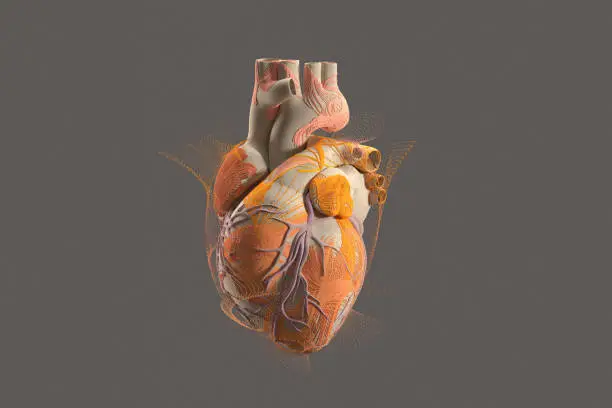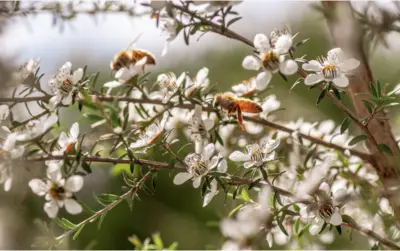How Many Legs Do Bees Have?
Bees are insects, and like all insects, bees have six legs – or three pairs:

The front legs are essential for grooming and cleaning pollen off of their bodies, while the middle legs aid with walking, running, and climbing.
The middle legs also help to move the pollen onto the hind legs.
The hind legs are vital to pollination. Bees brush, pack, collect, and transport pollen and propolis on the back legs to bring it back to the hive. All of a bee’s legs have claws and sticky pads for gripping surfaces and taste receptors to identify preferred plants and flowers.
Leg Structure and Function
Bees’ legs consist of several segments, including the coxa, trochanter, femur, tibia, and tarsus, each contributing to their overall function. The claws and pads at the end of their legs aid in gripping surfaces and collecting pollen. Bees also use specialized hairs, called scopa, on their legs for pollen transportation. The joints allow flexibility in movement, crucial for tasks such as grooming, feeding, and building nests. Understanding the leg structure provides insights into the intricate behaviors and adaptations of bees.

There are six key parts of a bee’s legs
| Parts | Description |
| Coxa | The first and largest segment, attached to the bee’s body, providing support and flexibility. |
| Trochanter | A smaller segment connecting the coxa and femur, facilitating leg movement. |
| Femur | The third segment, responsible for extending and flexing the leg. |
| Tibia | Following the femur, this segment aids in various activities, including grooming and pollen collection. |
| Metatarsus | The metatarsus, the fifth leg segment of an insect, is home to specialized tools for gathering pollen, including an auricle, which resembles a pincer, and a pollen press and brush. |
| Tarsus | The final leg segment, featuring joints and specialized structures like claws and pads for gripping, grooming, and pollen manipulation. |
Specialized Structures on Legs
Pollen Baskets (Corbiculae):
Located on the hind legs of worker bees, these concave structures are used for collecting and transporting pollen back to the hive.
Spurs:
Small, protruding structures on the legs that aid in cleaning and grooming, ensuring the bee’s body stays free of debris.
Brushes:
Fine hairs or bristles on the legs, particularly the hind legs, assist in pollen collection and distribution, contributing to the pollination process.
Leg Injuries and Regeneration
Bees, like many insects, do not have the capacity for regeneration, meaning they cannot regrow lost body parts. If a bee sustains a leg injury, it generally has limited options for recovery. However, bees are remarkably resilient, and they can adapt to injuries by redistributing tasks among colony members. Worker bees are known to exhibit plasticity in their roles, compensating for impaired individuals, which helps maintain the overall functionality of the colony.
What Happens When a Bee Loses Its Legs?
A bee may not make it if it loses a leg. A bee needs all six legs to survive; even if it can adjust to losing its front or middle leg, it won’t live as long as one that has all six legs. A bee may be able to survive with rest if it breaks a leg or sustains a similar injury.
Legs in Flight
Bees employ their legs for various tasks during flight. The legs play a crucial role in take-off, providing the necessary push against a surface to lift the bee into the air. During landing, bees use their legs to anchor onto surfaces securely. In mid-air, the legs aid in navigation, stability, and intricate maneuvers, showcasing the remarkable agility and coordination essential for a bee’s airborne activities
FAQs
Are all bee legs identical?
No, bee legs have distinct structures and adaptations based on the species and their roles within the colony.
What is the purpose of a bee’s legs?
Bee legs serve various functions, including mobility, grooming, pollen collection, and supporting other essential activities.
Read More: What do bees use their legs for?
Do different bee species have variations in leg anatomy?
Yes, bee species exhibit variations in leg anatomy based on their ecological roles and evolutionary adaptations.
Do all bees have the same leg span?
Leg spans vary among bee species, influenced by factors like size and ecological roles.
Can bees use their legs for self-defense?
While not the primary defense mechanism, bees may use their legs for grooming and warding off threats.





